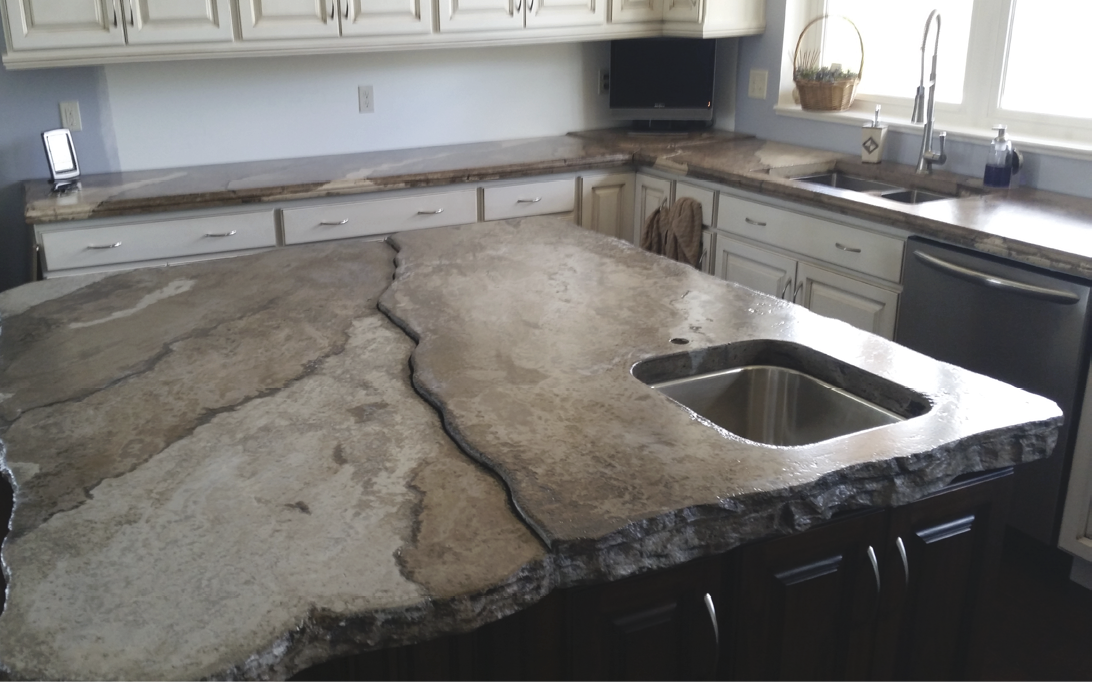How do you stain concrete countertops to look like marble?
Marble floors are stunning and very expensive! You can expect to pay $50 for a marble floor with a lustrous appearance and distinct veining depending on the size and thickness of the tile.
Concrete floors that look like marble can be a cost-effective alternative to real marble. They offer the same beauty and elegance as real marble but a fraction of the price. Faux marble concrete floors are also more customizable in color and pattern options.
There are many ways to transform concrete floors into marble. Most methods can also be applied to concrete floors that have been refinished or topped with concrete overlays. While some are easy enough to do yourself, others require special equipment or techniques that should be left to the professionals. Let's take a look at some options.
Staining
Concrete acid stains can create natural-looking marbling effects on concrete floors. Concrete acid stains work by reacting with concrete to form light and dark areas. This mimics the appearance of natural stone. You can also stain the entire floor in one color, then spot sand it with a diluted solution. This will create more marbling effects.
A clear sealer can be applied to concrete before staining with an eyedropper or artist's paintbrush to incorporate marble-like features into your floor design. The sealer acts as a resistor and stops the stain from reaching the area where it was applied. Acid-stained concrete flooring costs only $2 per square foot. This is significantly lower than the cost of marble or other natural stone flooring options. However, you will pay more if multiple stain colors are used and hand-applied.
Tip - Before you apply stain colors or other techniques to your marbled concrete floor, make sure that you test them on a small area of the slab. Color intensity will vary depending on concrete porosity.
Burnishing
A concrete floor or overlay that has been placed recently can be burnished to create natural-looking color variations. This involves either hand- or machine-tiling the surface in a swirling motion until you achieve the desired pattern and degree of color variation.
Burnishing gives your floor a marble-like, smooth sheen. You can use this method on uncolored concrete to create natural gray highlights or lowlights. It can also be combined with color-hardeners to make the floor mottled.
Painting
Pittsburgh Concrete floors can be painted to look like marble. This is similar to faux finishing walls but offers more color options than concrete staining. To create veining effects, one or more accent colors must be applied to the floor using a sponge or brush. The accent colors can be mixed with acrylic glaze to create more transparency and let the base color shine.
Tip - Make sure you only shop for concrete paint that is specifically designed for concrete. These paints are more durable and thicker than regular wall paints and will withstand foot traffic better. Find out more about concrete floors.
Metallic Epoxies
Because of their reflective pigments and pearlescent properties, metallic epoxy floor coatings look like concrete marble. You can create endless decorative effects with them.
You can create stunning swirls of color by using pool trowels with long wooden handles to cover specific areas. By randomly applying one or more metallic shades to the top of the base color and then blending with a squeegee, you can create marble-like variations in color. These projects show some examples of some of these unique effects.
DIY marble coatings
You can also paint your concrete floors with an epoxy coating that gives you a marble-like look, such as Rustoleum's RockSolid(r) Marble Floor Coating Kit. The kit contains two colors of epoxy coating and a two-part paint roll that can be used with a divided tray to apply both colors simultaneously and create marbling effects.
The coating is easy to apply, and the two-part colors can be mixed in the pouches. Your color options are limited to black, gray, and white tones. This limits your design flexibility.
Decorative scoring
Decorative scoring allows you to add realism to your marbleized concrete floors by making them into tile patterns instead of leaving them seamless. Marble floor tiles are usually rectangular or square and can be cut into tile patterns up to 24x24 inches.
Concrete has no restrictions. Concrete can be adapted to the space and the desired way by shrinking or growing faux marble tiles. Scoring can be used in conjunction with many of the above methods and is particularly effective when you want to create different color fields.

